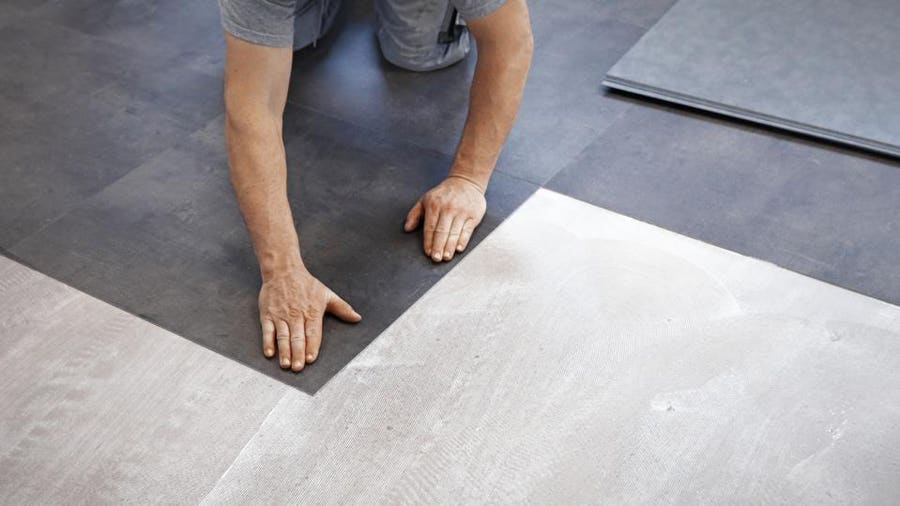It is not recommended to cover a floor vent as it can disrupt airflow and affect HVAC systems. Blocking vents can lead to inefficiency and potential damage.
Adequate ventilation is crucial for air circulation and maintaining indoor air quality. For optimal performance, floor vents should remain unobstructed. Blocking vents can cause pressure imbalances and hinder the HVAC system from functioning properly. It’s important to ensure that furniture and other items do not obstruct vents to promote efficient heating and cooling throughout the space.
Proper airflow is essential for a comfortable and healthy indoor environment.


Credit: www.angi.com
Pros Of Covering A Floor Vent
Covering a floor vent can offer benefits such as improved energy efficiency and enhanced air distribution within a space. By eliminating drafts and directing airflow, it can contribute to a more comfortable living environment.
Improves Temperature Control
When covering a floor vent, it improves the temperature control in the room. By directing the airflow where it is needed, it helps maintain a comfortable temperature. Regulating the heat distribution with covers ensures consistent warmth throughout the space.Enhances Energy Efficiency
Covering floor vents can enhance energy efficiency significantly. By controlling air circulation, less heat is wasted, reducing energy consumption. This practice promotes a more eco-friendly living environment and lowers utility bills.
Credit: www.facebook.com
Cons Of Covering A Floor Vent
While it may seem convenient to cover a floor vent, doing so can restrict proper airflow in your home. This can lead to inefficient heating and cooling, potential damage to your HVAC system, and an uneven distribution of air throughout your space.
Always consider the impact on airflow before covering a floor vent.
Restricts Airflow
Covering a floor vent limits the flow of air throughout your room, leading to uneven temperatures.
Compromises Hvac System Efficiency
By covering a floor vent, your HVAC system is forced to work harder, depleting energy efficiency.
Alternatives To Covering Floor Vents
` Alternatives to Covering Floor Vents In some situations, it may not be ideal to cover floor vents, as this can disrupt the distribution of air in your home. However, there are alternative solutions that can effectively manage airflow without the need to cover the vents completely. Explore the following options to find the best approach for your space. `<\p>` “ Using Adjustable Vent Covers `<\h3>` `
` Adjustable vent covers offer a practical solution to control the airflow in your home. These covers feature movable slats that can be adjusted to direct the airflow as needed. By utilizing adjustable vent covers, you can manage the temperature in a room without the need to cover the vent entirely. This allows for a more flexible and customizable airflow management system. `<\p>` “ Rearranging Furniture for Better Airflow `<\h3>` `
` Sometimes, the positioning of furniture can obstruct the airflow from floor vents. By rearranging your furniture to ensure that it doesn’t block the vents, you can facilitate better air circulation throughout the room. This simple adjustment can significantly improve the distribution of air, maximizing comfort and energy efficiency in your home. `<\p>`
Important Considerations
One of the important considerations when contemplating covering a floor vent is the effect it can have on air quality. The purpose of floor vents is to facilitate the circulation of air throughout a room, which helps maintain a comfortable indoor temperature. By covering the vent, you disrupt this airflow and potentially interfere with the quality of the air in your home.
A covered floor vent can restrict the airflow coming from your HVAC system, leading to poor air circulation. This lack of proper ventilation can result in stagnant air, which may become humid, stuffy, or even develop unpleasant odors over time. In addition, if the vent is covered completely, it can prevent the efficient distribution of conditioned air, making it less effective in reaching the desired temperature.
Another crucial consideration when thinking about covering a floor vent is its potential impact on the warranty of your HVAC system. HVAC manufacturers typically have specific guidelines and recommendations for proper vent maintenance and usage. By covering the vent, you may be tampering with the system’s intended design and functionality, which could invalidate the warranty.
It’s essential to carefully review the terms and conditions of your HVAC warranty before covering any floor vents. Some warranties may explicitly state that alterations to the system, such as covering the vents, will result in voiding the warranty. Others may have specific requirements or limitations regarding vent coverings. Ensuring compliance with these terms can save you from potential financial burdens if any issues arise with your HVAC system in the future.

Credit: ongaroandsons.com
Frequently Asked Questions Of Is It Ok To Cover A Floor Vent
Can You Cover A Floor Vent With Furniture?
Yes, you can cover a floor vent with furniture as long as it does not restrict airflow.
Is It Safe To Cover A Floor Vent With A Mat?
Covering a floor vent with a mat might restrict airflow and impact the efficiency of your HVAC system.
Can I Block A Floor Vent To Redirect Airflow?
Blocking a floor vent to redirect airflow can disrupt the balance of your HVAC system and negatively affect its performance.
Will Covering A Floor Vent Save Energy?
Covering a floor vent may cause energy inefficiencies as it can disrupt the airflow and affect the overall heating or cooling distribution in your home.
How Can Covering A Floor Vent Affect Air Quality?
Covering a floor vent can restrict air circulation, potentially leading to stagnant air and poor indoor air quality.
Conclusion
Whether it’s okay to cover a floor vent ultimately depends on your specific circumstances. Consider the impact on airflow, energy efficiency, and potential damage to the HVAC system. Consulting with a professional can provide valuable guidance for making an informed decision.
Be mindful of maintaining a balance between comfort and functionality for your home.